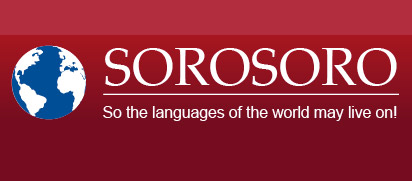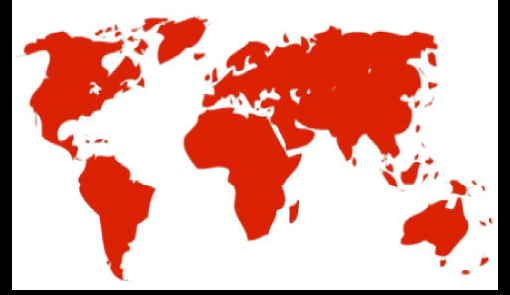Print  |
|


Papiamentu
This page was elaborated by Bart Jacobs, PhD student at the University of Munich (Germany), Linguistisches Internationales Promotions Programm (LIPP), in co-tutela with the University of Coimbra (Portugal).
Information on the language
Alternative names: Papiamento (on Aruba); Papiaments (Dutch label)
Classification:
Papiamentu is a creole language whose classification as either Spanish- or Portuguese-based creole is controversial, due to its mixed Spanish-Portuguese lexicon.
Martinus (1996), Quint (2000) and Jacobs (2009) have revealed linguistic ties with the Portuguese-based creoles of Upper Guinea, as spoken on the Cape Verde Islands and in Guinea-Bissau / Casamance. The nature of these ties warrants sub-grouping Papiamentu within the branch of Upper Guinea Portuguese Creole. For this branch, Quint proposed the French label Créoles Afro-Portugais de l’Afrique de l’Ouest.
Main dialects:
Papiamentu can roughly be subdivided into three dialects, corresponding to the three islands on which it is spoken: Papiamentu, Curaçao (/ Curaçoleño; appr. 120.000 speakers); Papiamento, Aruba (/ Arubiano; appr. 60.000 speakers); Papiamentu, Bonaire (/ Boneriano; appr. 10.000 speakers). The dialectal differences concern the lexicon, phonology and (though rarely) morphosyntax, but never impede mutual intelligibility.
Scholarly studies dedicated solely to the description of dialectal variation have yet to appear. Scholarly Papiamentu grammars (cf. Selected References) are all based on the dialect of Willemstad, the capital city of Curaçao. The dictionaries listed under Selected References do, however, contain dialectal specifications.
Area:
Papiamentu is the official language of the leeward islands of the Netherlands Antilles (Bonaire and Curaçao) and Aruba (independent since 1986). The three islands, jointly referred to as the ABC Islands, are situated at some 60 km off the coast of Venezuela and cover a surface area of an estimated 931 square kilometers (Curaçao 444 km2; Bonaire 294 km2; Aruba 193 km2; source: Wikipedia).
Papiamentu is also spoken by a sizeable number of immigrants in the Netherlands.
Number of speakers:
Papiamentu has an estimated number of 270.000 native speakers, of which approxumately 70.000 reside in the Netherlands, while the ABC Islands harbor the remainder (Kouwenberg 2004).
Language status:
Papiamentu is (together with Dutch & English) the official language of Aruba (since 2003), Bonaire and Curaçao (since 2007). Papiamentu is used for all daily purposes, on the streets as well as in the households of the ABC Islands.
Vitality and transmission:
Compared to most creole languages, Papiamentu enjoys a high prestige among its speakers and is in no danger of extinction. Newspapers, radio and television programs written and spoken in Papiamentu appear daily. A collection of online media is offered below in the list of Selected References.
The Fundashon pa Planifikashon di Idioma, founded in 1998 and established in Willemstad, is dedicated to language planning and promotion in the broadest sense. Among other things, they assured the survival, reproduction and scholarly availability of early (19th/early 20th century) evangelical Papiamentu writings.
In 1987, Willemstad, the Curaçaoan author and linguist Frank Martinus Arion founded the Kolegio Erasmo, the first primary school offering a full educational program in Papiamentu (cf. Kouwenberg 2004:2107). Nonetheless, education on the ABC Islands nowadays is still primarily in Dutch as command of that language is considered a precondition for economic prosperity.
From the 1950s onwards, novels, short stories and poetry have been written in Papiamentu. Berry-Haseth & Broek (1998) is a three-volumed study of Papiamentu literature, offering the most complete anthology to date. Broek (2009) provides an overview of contemporary trends and currents in the literature of the ABC Islands.
Two publications, Reinecke (1975:147-209; with the cooperation of Frank Martinus Arion) and particularly Coomans-Eustatia (2005), stand out for providing exhaustive bibliographies of the Papiamentu language (including literary, linguistic, socio-linguistic and historical publications). In Leiden, the Netherlands, the library of the KITLV / Royal Netherlands Institute of Southeast Asian and Caribbean Studies offers the richest collection of (scholarly and non-scholarly) Papiamentu-related material world-wide.
Historical & ethnographic specifications
The year 1499 stands as the year of discovery of the ABC Islands by Spain, who moderately settled but never actively colonized the islands (tellingly dubbing them Las Islas Inútiles). The official year of the Dutch conquest of Curaçao is 1634. While the few Spaniards present at the time voluntarily resettled to the Venezuelan mainland, a handful of native Amerindians was allowed to remain on the islands to raise cattle and cut dyewood.
Active settlement policies including intensive slave imports were launched in the 1650s. Slavery was officially abolished in 1863. Though the exact origins of the slaves imported in the 17th century remain unclear due to a lack of records, scholars agree that, in the 18th century, the regions covering modern-day Ghana, Congo and Angola supplied most of the slaves imported into Curaçao.
While Dutch Catholics and Protestants have always constituted the dominant non-African minority, the population of the ABC Islands has furthermore received significant influxes of Latin American immigrants and, particularly, Sephardic Jews from Spain, Portugal, Italy or the Netherlands. Inter-Caribbean networks have furthermore guaranteed a continuous flux of migrants of differing ethnic appurtenance. Needless to say, all of these ethnic groups have contributed (and continue to contribute) to the shaping and coloring of the creole culture of the peoples of the ABC Islands.
Linguistic features
As most creole languages, Papiamentu has no inflection on the verbs. Instead, use is made of preverbal particles to indicate tense, mood and aspect relations.
Word order is SVO. As opposed to Spanish and Portuguese (the principal donor languages), Papiamentu is not a pro-drop language and lacks gender agreement.
The Papiamentu lexicon is mainly derived from (in order of importance) Spanish, Portuguese, Dutch, English, French and African languages. Salient is the 3rd person plural pronoun nan (of unknown, but probably African origin), which also serves as a post-nominal plural marker, e.g. kas ‘house’ > kasnan ‘houses’. In addition, Papiamentu is characterized by the use in written as well as spoken discourse of a European-like, auxiliary-based passive, thought to result from decreolization towards Dutch and Spanish.
A few words in Papiamentu
Soño liber
Na pia di trapi di e kastio blanku riba seru nos dos a mira luna kologá na su pantaya blou sereno…, su amigunan den konsierto kinipí wowo ku laman di plata…, i nan a inspirá nos pa skirbi e libreto. Pa karga nos historia un músiko franses bisiña a krea muzik euro-karibeño, skohe mas artista krioyo na disfras di siglo bintiunu i monta na Monte Tamarindo un ópera eksepshonal. Den e último parti di e di kuater esena nos ta kanta un dueto, konta di un kastio nobo riba seru kaminda na su pia, tur anochi laman ta zoya melodia pa nos soña otro soño liber. |
Free dreams
On the first steps of the white castle on the hill he and I saw the moon hanging on her serene blue screen…, her friends in concert winking at the silver sea…, and they inspired us to write the libretto. To support our story a French neighbour, musician created Euro-Caribbean music, selected more Creole artists in twenty-first century costumes to mount at Tamarind Hill an exceptional opera. In the last part of the fourth scene we sing a duet, telling of a new castle on the hill where at its feet, every night the sea sways to melodies, to have us dream yet another free dream. |
Lucille Berry-Haseth Curaçao written in Saint Martin 2009 English version by the author
Selected references
Authoritative scholarly grammars and grammatical sketches:
Kouwenberg, Silvia & Eric Murray. 1994. Papiamentu. Munich: Lincom.
Kouwenberg, Silvia & Abigail Ramos-Michel. 2007. “Papiamentu (Creole Spanish/Portuguese)”. In: John A. Holm & Peter L. Patrick (eds.): Comparative Creole Syntax. Westminster: Battlebridge, pp. 307-332.
Lenz, Rodolfo. 1928. El papiamento: la lengua criolla de Curazao. Santiago de Chile: Balcells & Cia.
Maurer, Philippe. 1988. Les modifications temporelles et modales du verbe dans le papiamento de Curaçao (Antilles Néerlandaises). Hamburg: Helmut Buske.
Maurer, Philippe. 1998. “El papiamentu de Curazao”. In: Matthias Perl & Armin Schwegler (eds.): América Negra: panorámica actual de los estudios lingüísticos sobre variedades hispanas, portuguesas y criollas. Frankfurt am Main: Vervuert, pp. 139-217.
Munteanu, Dan. 1996. El papiamento, lengua criolla hispánica. Madrid: Gredos.
Dictionaries:
Joubert, Sidney. 2007. Handwoordenboek Nederlands-Papiaments. Willemstad: Joubert.
Ratzlaff, Betty. 1992. Dikshonario Papiamentu – Ingles Dikshonario. Bonaire: TWA Dictionary Foundation.
Van Putte, Florimon & Igma van Putte-de Windt. 2005. Dikshonario Papiamentu-Hulandes. Woordenboek Papiaments-Nederlands. 2 volumes. Zutphen: Walburg Pers.
Other sources mentioned in this article:
Berry-Haseth, Lucille & Aart G. Broek. 1998. Pa Saka Kara. 3 volumes. Willemstad: Fundashon Pierre Lauffer.
Broek, Aart G. 2009. The Colour of my Island. Haarlem: In de Knipscheer.
Coomans-Eustatia, Maritza. 2005. Bibliography of the Papiamento Language. Bloemendaal: Stichting Libri Antilliani.
Jacobs, Bart. 2008. Papiamentu: A diachronic analysis of its core morphology. Phrasis 2008 (2), 59-82.
Jacobs, Bart. 2009a. “The Upper Guinea origins of Papiamentu. Linguistic and historical evidence”. Diachronica 26:3, pp. 319-379.
Jacobs, Bart. 2009b. The origins of Old Portuguese features in Papiamentu. In: Nicholas Faraclas, Ronald Severing, Christa Weijer & Liesbeth Echteld (eds.), Leeward voices: Fresh perspectives on Papiamentu and the literatures and cultures of the ABC Islands. Volume 1, 11-38. Curaçao: FPI/ UNA.
Jacobs, Bart. 2009c. Papiamentu’s Swadesh-100-list. Paper presented at the The Swadesh Centenary Conference 17-18 January 2009, Max Planck Institute for Evolutionary Anthropology, Leipzig (Germany). Available online.
Jacobs, Bart. Forthcoming a. Los verbos estivos en el papiamento y el caboverdiano de Santiago. Revista Internacional de Lingüística Iberoamericana (RILI). To appear in 2010.
Jacobs, Bart. Forthcoming b. On the Dutch presence in 17th century Senegambia and the emergence of Papiamentu. In: Proceedings of the Brokers of Change Conference: Atlantic Commerce and Cultures in Pre-Colonial “Guinea of Cape Verde”. Birmingham: Centre of West African Studies, University of Birmingham. To appear in 2010.
Jacobs, Bart. Forthcoming c. Upper Guinea Portuguese Creole: Evidence in favor of a Santiago birth. Journal of Pidgin and Creole Languages, 25:2, 2010.
Jacobs, Bart. Forthcoming d. Review of L’élément africain dans la langue capverdienne. Africanismos na língua caboverdiana, by Nicolas Quint (2008). Journal of Pidgin and Creole Languages.
Kouwenberg, Silvia. 2004. “The Dutch-speaking Caribbean”. In: Ulrich Ammon, Norbert Dittmar, Klaus J. Mattheier & Peter Trudgill (eds.): Sociolinguistics. An international handbook of the science of language and society. Volume 3. Berlin, New York: Mouton de Gruyter, pp. 2105-2114.
Martinus, Efraim Frank. 1996. The Kiss of a Slave: Papiamentu’s West-African Connections. Ph.D. dissertation. Universiteit van Amsterdam.
Quint, Nicolas. 2000. Le Cap Verdien: Origines et Devenir d’une Langue Métisse. Paris: L’Harmattan.
Reinecke, John E. 1975. A Bibliography of Pidgin and Creole Languages. Hawaii: University Press.
Online sources:
Online Papiamentu newspapers:
Online radio:
Online dictionary:
Online encyclopedia:
Please do not hesitate to contact us should you have more information on this language: contact@sorosoro.org








